| کد مقاله | کد نشریه | سال انتشار | مقاله انگلیسی | نسخه تمام متن |
|---|---|---|---|---|
| 3157783 | 1198198 | 2017 | 7 صفحه PDF | دانلود رایگان |
PurposeThis study was designed to assess changes over time in third molar position relative to the occlusal plane and in the periodontal probing status of third molars in asymptomatic subjects who had at least 1 third molar below the occlusal plane at baseline and retained all third molars to follow-up.Patients and MethodsBetween 1998 and 2002, healthy subjects with 4 asymptomatic third molars and adjacent second molars were enrolled in an institutional review board (IRB)-approved longitudinal study. Clinical and radiographic data of 146 subjects who had at least 1 third molar not fully erupted at baseline with at least 2-year follow-up were analyzed. At baseline and longest follow-up, full mouth periodontal probing, 6 sites per tooth, including third molars was conducted. An indicator variable was used to record periodontal status (probed, not probed) for each third molar. A periodontal probing depth (PD) greater than or equal to 4 mm in the third molar region was considered indicative of periodontal pathology. Panoramic radiographs were analyzed to assess whether unerupted third molars erupted to the occlusal plane. To assess descriptively the influence of age and length of follow-up on the change in third molar position and periodontal status, subjects were stratified by age at enrollment as younger (<25 years) or older (≥25 years) and by length of follow-up as shorter follow-up (2 to <4 years), or longer follow-up (4 or more years). Because of the small sample sizes in each stratum, analyses are limited to descriptive statistics only.ResultsSixty-six percent of the 146 subjects were less than 25 years old at enrollment. The majority were female and Caucasian. Sixty-eight percent of the 97 younger subjects and 43% of the 49 older subjects presented at baseline with all 4 third molars not fully erupted. Of 584 third molars evaluated, 79% were not fully erupted at baseline; of 462 molars, 80% could not be probed at baseline. Eruption to the level of the occlusal plane occurred in all 4 strata although only a third of the unerupted molars reached the occlusal plane even in the younger subjects with the longer follow-up. Of 369 molars that could not be probed at baseline, approximately 35% could be probed at follow-up with the highest percentage of change in the older subjects with the longer follow-up (46%).ConclusionsThe anatomic position of third molars was not static over time even if subjects were greater than 25 years old. Thus, unerupted third molars should be monitored for changes in position and periodontal pathology as long as the teeth are retained.
Journal: Journal of Oral and Maxillofacial Surgery - Volume 65, Issue 10, October 2007, Pages 2011–2017
